Negotiation best practices – negotiation preparation
The old cliché says ‘failing to prepare means preparing to fail’ and most negotiators greatly underestimate the amount of time required to effectively prepare for and research the background to any business negotiation. The better our preparation, the greater the chances of achieving our objectives. Let’s analyse the key elements of negotiation preparation and what we need to do to optimse our efforts and improve negotiated results.
Understanding the context
The context of negotiation can be understood through analysis of the environment in which businesses operate. Some of the key elements to consider here include:
- What is the nature of the sale/purchase you are making in terms of risks involved, the level of expenditure and the complexity of the deal?
- Competitive analysis – what is the nature of the market and what alternatives do our counterparts have available. E.g. in purchasing it is critical to understand the supply market in order to prepare our negotiation strategy effectively. We will approach negotiations with a sole supplier differently than dealings with a potential vendor who operates in a fully competitive market. Identifying market characteristics for specific services and goods will enable us to understand how the market works, its competitiveness and key suppliers.
- Is it a one-off deal or should we consider maintaining a long-term relationship that creates opportunities for future business?
- Have we had any dealings with the other side in the past and what is their most likely approach to doing business?
- What does the power balance look like? (Legitimate power, Reward power, Coercive power, Expert power, Referent power)
- How skilled are the negotiators on both sides of the table?
- What cultures will be represented at the table? (Ethnic, Corporate & Professional Cultures should be considered). Do you need to do any homework regarding the local customs?
- Who are all the parties & individuals involved in the negotiation and the decision making process? When selling it is critical to identify not only final decision makers but also final users of our product or service in order to develop internal groups of support within our counterpart’s organization. A diversified approach is required as different buying roles look for different benefits and advantages when purchasing a product or service. Final decision makers (read people who release the money e.g. CEO, FD etc.) will most likely be interested in Return on Investment and increased revenues & margins as the ultimate result of purchasing your product, service or solution. The final user who looks for improved productivity and efficiency will find the financial elements almost completely irrelevant.
Understanding the deal objectives
In any negotiation, it is critical to understand the tangibles that all parties are trying to gain or achieve. If we fail to prepare and prioritize our deal objectives we put ourselves at risk of being exploited and/or ending with a sub-optimal agreement. Whether you are engaged in negotiation on the sales or purchasing side consider the following elements when preparing for negotiation:
Price and payment

Key Obligations

Delivery

Warranties

Intellectual property

Risks

Price and Payments
The notion that price is the only issue in negotiation is not entirely logical. The competition and the complexity of most business deals require finding ways to create additional value and to move negotiation from positional bargaining to synergistic and creative joint problem-solving. Professional buyers are not charged with buying the cheapest solution available but rather with providing their organisations with the cheapest total cost of ownership. It means that besides our company, product and salespeople attributes we can differentiate ourselves from our competition by using the TCO – Total Cost of Ownership approach that is composed of:
- Acquisition costs: includes price, freight, legal fees, warehousing costs, initial training costs etc.
- Maintenance costs – repair labour, loss of productivity or revenue during maintenance – The cost of use – fuel or energy costs, safety costs, performance monitoring costs.
- Support costs – insurance, taxes, management fees etc.
- Supplier performance metrics – financial stability, cost improvement ideas –
- Delivery costs can be imposed either on the buyer or the supplier and may include: customs taxes, fuel, loading goods etc.
- Quality – testing, defect management, costs and losses associated with potential external failure.
- Customer Support – how many people involved, for what period of time etc. Bear in mind that happy customers will tell others of their positive experience.
If you are able to minimize the other side’s costs involved in the whole life cycle of our product, solution or service and at the same time offer value for money you will be in a better position to differentiate your value proposition, influence key decision makers and reach an agreement.
Additionally, it is necessary to clearly define the payment terms and conditions. If you buy, make sure you know what is included in the price, when you have to pay, and what happens if you don’t pay on time.
Key Obligations
What work the supplier will do and what the buyer will do in return. Make sure your product and services are clearly defined and reflect your priorities. Include all the relevant quantities and specifications. As a supplier make sure you can live with all the specifications stated by the buyer.
Delivery
When and where are the goods or services to be supplied? Is there any extra charge for delivery? How important are the delivery timelines and what happens if the delivery doesn’t take place on time?
Warranties
A promise that the products or services will meet a required standard. As a supplier don’t expect to sign a deal with no warranties at all and make sure you know the limits on what you are offering. In order to maintain trust and credibility make sure that you can live with any promises you are making.
Intellectual property
Difficulties in negotiating IP ownership can lead to delays in implementing an agreement.
Carefully negotiate IP ownership rights and consider the following factors:
- What party is paying for the R&D?
- Could the development be used by the competitors to your loss if you don’t own the IP? – How can you prevent competitors to use the same IP?
Intellectual Property can become a key differentiator in a highly competitive market place.
Risks
The best way to manage risks in negotiation is to include the elements that carry any risk in a written contract. Cultural consideration is critical. In Asian countries like China the goal of negotiation is not a signed contract. In China – unexpected circumstances, whenever they arise, are resolved through the relationship and therefore all the risk involved needs to be managed through the relationship as well. Explore the risk aversion of the other side as the value in negotiation can be created by shifting risk to the party that is more able to bear it, in exchange for greater potential returns.
Summary
Analysing the above elements are crucial in planning Concession Strategies that will assist you to leverage maximum value from trades and in planning meetings optimally. Always map out all your negotiation goals as fully as you can and for each Goal, capture your own and your counterparty’s view of the Goal with the best information you have.
Recent Posts
10 Procurement Negotiation Myths That Sound Strategic But Kill Your Results
Most procurement teams don’t lose negotiations at the table — they lose them before they even start. This article exposes 10 outdated beliefs...
Strategic RFP Preconditions to Maximise Negotiation Leverage
Most negotiations start too late. These high-impact RFP preconditions help procurement teams take control early — exposing supplier risks, shaping the deal, and...
How to Use the Decoy Effect in Procurement Negotiation
In procurement, smart framing beats force. This article breaks down how to use the Decoy Effect—a behavioural science tactic—to guide suppliers toward your...


